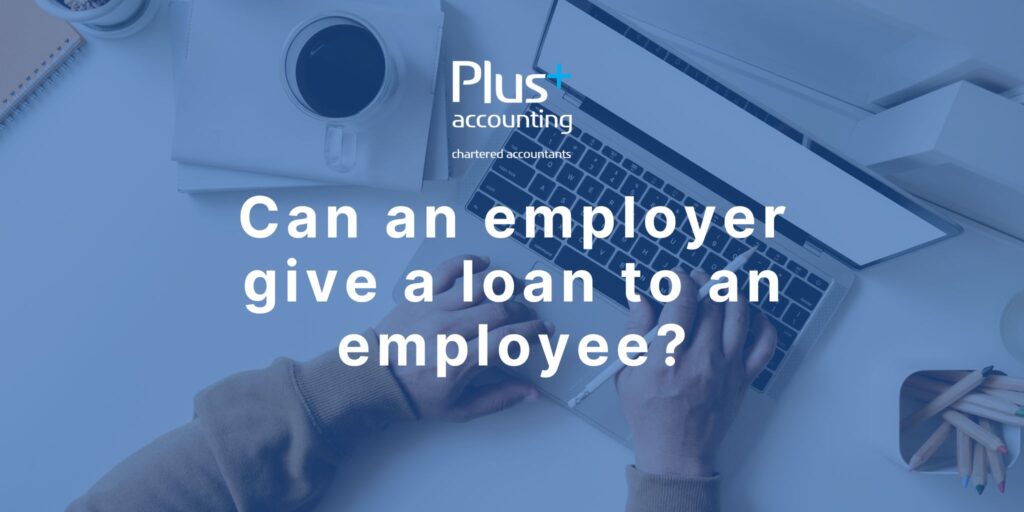
Employer loans to employees occur more often than you might think, and we find on a regular basis that employers do not realise there are tax, national insurance and reporting implications of making these loans, whether interest bearing, low interest or interest free.
This blog aims to tell employers about some of the non-financial considerations in agreeing to loan money to an employee and following a decision to make a loan, outlines the tax, national insurance and reporting requirements.
My employee has asked for a loan, what do I need to consider?
Aside from whether the business has the cash to make such a loan, it is important to think about whether as a business you want to set a precedence for making loans. Here are some questions to consider and potentially include in a loan agreement with your employee.
- Does the business include loans in the employee handbook?
- Do you have criteria to decide who the business would or would not lend to?
- How will the employee repay the loan?
- How long is the loan for?
- What happens if the employee needs a payment holiday?
- What happens if the employee leaves your employment?
- Does the employee understand the income tax implications of an interest-free or low interest loan?
What do I have to report to HMRC?
Loans under £10,000 do not have any reporting requirements and there are no income tax or national insurance implications as long as the loan balance remains under £10,000 for the whole tax year. The tax year runs from 6 April to 5 April.
A loan given at a rate of interest which is equal to or higher than HMRC’s official rate of interest will also not need to be reported and again, there are no income tax or national insurance implications. This is on the basis that both the loan period and the interest rate are fixed.
Loans in excess of £10,000 which are charged at a nil rate of interest or rate lower than HMRC’s official rate of interest are reportable on a form called a P11d and are called ‘beneficial loans’. The employer will have to pay Class 1A National Insurance on the ‘cash equivalent’ of the beneficial loan and the employee will be taxed, usually through the reduction of their personal allowance by the ‘cash equivalent’ value.
What is the cash equivalent value of the beneficial loan?
The cash equivalent is essentially the difference between the interest on the loan at HMRC’s official rate of interest and the interest paid.
The value of the loan used to calculate the interest is usually calculated on the average basis by taking the value of loans at the start of the tax year/or issued in the year, adding on the value of the loans at the end of the tax year/paid off/written off in the tax year, divided by two. HMRC’s official rate of interest will be applied to this and compared to the actual interest paid. The difference is subject to Class 1A National Insurance and income tax.
For example:
An employee is loaned £20,000 in May 2022 and by the end of the tax year the loan has been partially repaid and is now £15,000. The average of these loans is £17,500 ((20,000 + 15,000)/2)).
HMRC’s official rate of interest is 2% x £17,500 = £350
Interest rate charge by employer is 0% x £17,500 = 0
Therefore, the cash equivalent is £350 (£350 less £0)
Class 1A National Insurance at 13.8% on £350 is £48.30
Other points to consider
There is a ‘strict method’ to calculate the cash equivalent of beneficial loans. There are times where this might produce a lower cash equivalent and either the employer or HMRC can opt to use this.
When calculating loans to see if they are under the £10,000 reporting threshold, all loans to an employee are aggregated, for example three separate loans of £9,000 each will be reportable because in aggregate they amount to £27,000.
How to report employee loans on a P11d
Employers are required to file P11d’s on a tax year basis and the filing deadline is always the 6 July following the end of the tax year.
Payment of Class 1A National Insurance is always payable by 22 July following the end of the tax year when paying online.
Can I process the benefit through payroll?
It is possible to process many benefits in kind through payroll, but currently beneficial loans cannot be dealt with through payroll.
Useful links
Expenses and benefits: loans provided to employees
P45, P60 and P11D forms: workers’ guide
Caveats:
This blog only refers to loans to employees, not directors’ loan or loans to family members of employees or directors.
Where loan amounts are large and change within the tax year, the strict method may be preferable but seek advice when deciding which to use to ensure you know the implications of each method.
Tax, national insurance rates and interest rates used in the blog relate to the tax year 2022/23 and were correct at the time of writing. These rates normally change each tax year, and you should check for changes.

Author: Helen Griffiths, Accounts and Audit Manager, Plus Accounting
Any views or opinions represented in this blog are personal, belong solely to the blog owner and do not represent those of Plus Accounting. All content provided on this blog is for informational purposes only. The owner of this blog makes no representations as to the accuracy or completeness of any information on this site or found by following any link on this site.
Date published: 19 April 2023

